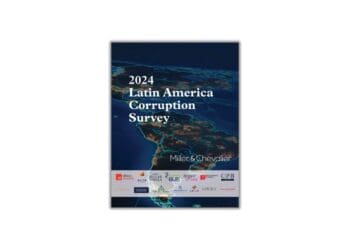Companies invest in enterprise risk management to identify, analyze, respond to and monitor risks and opportunities in their internal and external environments. These investments maximize opportunities, help avoid nasty surprises and provide reasonable assurance on the achievement of the organization’s objectives.
Established risk assessment processes can suffer from stale thinking in identifying and evaluating risks, especially risks that are ever-changing. Here are five ways to refresh your process, push thinking beyond the “known knowns” and improve the quality of thinking in your risk assessment process.
Brainstorming
Brainstorm with a group of six to 12 positive, flexible thinkers who represent different perspectives, levels and functions of the organization and share new ideas for innovation or improvement—or in this case, for identifying new areas of opportunity or risk to the company.
Stimulate over-the-top, outside-the-box ideas and ask “what if?” questions. For example, former Disney CEO Michael Eisner asked the question, “What if [the theme park] were completely underwater—what then?” The result was Tokyo DisneySea. Consider whether there’s a germ of an idea that presents a real opportunity or risk.
Assumptions Analysis
Assumptions analysis is a technique defined by the Project Management Institute as identifying, evaluating and addressing project risks related to assumptions made during the project planning process.
The same assumptions analysis approach can be applied to the risk assessment process. Management would identify the assumptions being made during the strategic and operational planning processes, identify the risks introduced from these assumptions and incorporate those risks into the organization’s risk management program. For example, management assumes that new privacy requirements were addressed by new internal controls; address the risks of that assumption by testing to confirm that internal controls to address the new requirements are in place and operating effectively.
Assumptions are potential failure points in a risk assessment because they’re often unstated, and there’s a natural tendency for assumptions to be accepted as truth. Assumptions need to be recorded and their associated risks integrated into your risk assessment process so they can be assessed, mitigated, monitored and managed.
Force-Field Analysis
Force-field analysis, a method developed by psychologist Kurt Lewin in 1951, facilitates organizational change by seeking to understand two opposing sets of forces: driving forces that promote change and restraining forces that work to maintain the status quo.
Force-field analysis can sharpen the results of your risk assessment process by systematically considering the people, habits, customs and attitudes that both drive and restrain the organization’s ability to change to achieve its objectives. For example, if an organization’s objective is to increase production while maintaining or improving quality, then incentive compensation, competition, monitoring by management or scoreboard reporting of progress might be examples of driving forces. Resistance to change, apathy, inadequate training or expertise or lack of meaningful data to measure results before and after the change might be examples of restraining forces.
Scenario Analysis
This is a tool that allows companies to evaluate the decisions being made today by considering a small number of alternative pictures of the future and the way those alternatives might affect the company.
Royal Dutch Shell is known for the way it develops scenarios as carefully crafted stories about the future and then links the scenario analysis to strategy in a way that can be communicated and used in decision making. Scenarios help Shell link the uncertainties about the future to the decisions made today. Scenario analysis is also being used, for example, in the retail industry to explore the risks of online shopping for traditional stores, such as risks related to long-term store leases.
By exploring a series of scenarios based on where participants see potential big shifts in technology, society, economics, politics, etc., your risk management program can identify new areas or risks and build in triggers to detect early-warning signs to signal that a particular scenario is developing.
Delphi Method
Delphi is a structured forecasting and decision-making technique that uses a participatory method to develop agreement on an issue through a group’s understanding of a situation and its complications. Delphi often incorporates scenarios in its analysis of the issue.
Delphi can help assess risks because assessing risks isn’t always precise or easily quantifiable, and the analysis can benefit from subjective judgments on a collective basis. Delphi allows for greater input since opinions are shared anonymously with the group, which can allow a larger number of individuals to participate in the group process. When used in risk assessment, Delphi can help the group further its understanding of emerging risks where the future is uncertain, technologies may be converging, or there are great differences of opinion.
The Bottom Line
Done well, risk management can help an organization avoid surprises and equip management to respond rapidly and effectively to emerging threats and opportunities. To be effective, the risk identification process needs to go beyond “known knowns” and be fresh, creative and continuously uncovering and evaluating emerging risks, such as those introduced by converging technologies. Introducing new ways to stimulate thinking can fine-tune the risk assessment process, generate new ideas and increase and broaden awareness of potential risks, ultimately improving your ability to anticipate and respond to both threats and opportunities.









